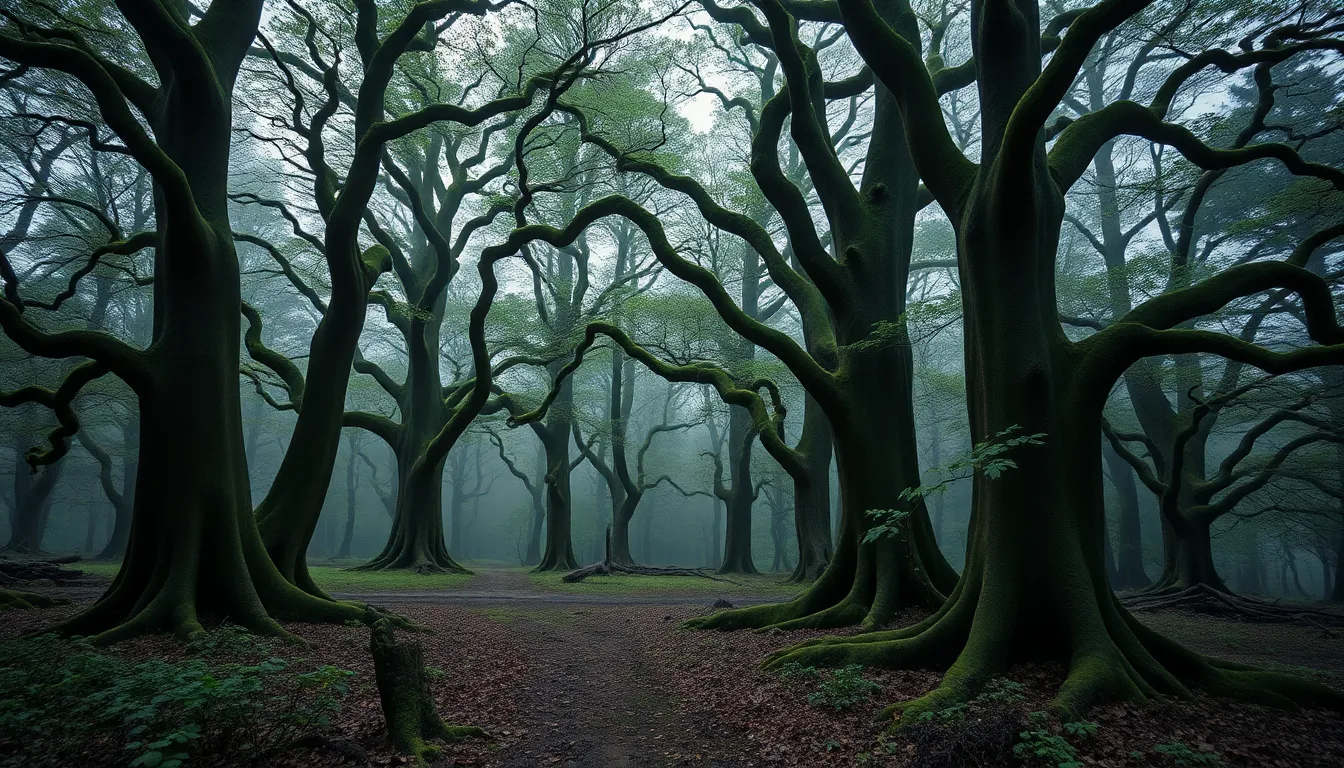Celtic Sacred Groves: Where Trees Speak to the Soul
I. Introduction
Celtic spirituality deeply values the connection between the natural world and the human spirit. The Celts viewed nature not merely as a backdrop to life but as a sacred entity imbued with spiritual significance. Among the most revered aspects of this belief system are the sacred groves—forested areas designated for worship, reflection, and communion with the divine.
In Celtic culture, sacred groves served as sanctuaries where individuals could connect with the spirit of the land and the wisdom of the trees. These groves were integral to rituals and community gatherings, embodying the mystical relationship between humanity and the environment. This article delves into the significance of Celtic sacred groves, exploring their historical roots, cultural symbolism, and modern-day relevance.
II. Historical Context of Celtic Sacred Groves
The origins of Celtic reverence for nature can be traced back to their animistic beliefs, where every element of nature was thought to possess a spirit. This perspective fostered a profound respect for trees, which were seen as sacred beings that bridged the earthly and spiritual realms.
Druids, the priestly class of the Celts, played a crucial role in the reverence of sacred groves. These wise individuals conducted rituals, offered sacrifices, and served as mediators between the gods and the people. Historical accounts and archaeological findings suggest that groves were often chosen for their unique natural features, such as towering oaks or ancient yews, which were thought to embody divine presence.
A. Origins of Celtic Reverence for Nature
- Animism and the belief in nature spirits
- Connection to the land and seasonal cycles
- Influence of mythology and folklore
B. Role of Druids and Their Practices in Sacred Groves
- Conducting rituals and ceremonies
- Using groves as teaching spaces for spiritual knowledge
- Understanding the natural world as a reflection of divine order
C. Historical Accounts and Archaeological Findings
- Evidence of ancient worship sites
- Literary references in Celtic mythology and history
- Preserved groves in modern landscapes
III. The Symbolism of Trees in Celtic Culture
In Celtic mythology, trees are powerful symbols of life, death, and rebirth. They represent the cycle of existence and the interconnectedness of all living beings. Each tree type carries its own symbolic meaning, often related to specific deities or natural phenomena.
Among the most revered trees in Celtic culture are:
- Oak: Symbolizes strength, endurance, and wisdom.
- Yew: Associated with death and rebirth, often found in burial sites.
- Ash: Represents the cosmic tree, connecting the underworld, earth, and heavens.
The Celtic calendar, which is intricately tied to the seasons and natural cycles, further emphasizes the significance of trees. Each month corresponds to different trees, marking time and guiding agricultural and spiritual practices.
IV. Sacred Groves as Spiritual Spaces
Ancient Celtic society viewed sacred groves as liminal spaces where the divine could be encountered. These groves often exhibited specific characteristics that made them ideal for spiritual practices.
- Natural Features: Groves were typically located near rivers, hills, or other significant geographical features.
- Flora and Fauna: The presence of specific plants and animals contributed to the sacred atmosphere.
- Isolation: Groves provided a peaceful retreat, away from the disturbances of daily life.
Rituals and ceremonies conducted within these groves were aimed at honoring deities, seeking guidance, and fostering community bonds. The significance of grove locations often reflected the local landscape’s natural beauty and spiritual energy.
V. The Influence of Nature in Celtic Beliefs
Nature was viewed as a divine force in Celtic spirituality, shaping their worldview and ethical frameworks. The interconnectedness of all living beings is a fundamental tenet, emphasizing that every action has consequences, both for individuals and for the community.
Celtic beliefs advocate for harmony with the environment, encouraging stewardship and respect for the natural world. This perspective informs ethical and moral frameworks that prioritize sustainability and balance.
VI. Modern Interpretations of Celtic Sacred Groves
In contemporary society, there has been a revival of interest in ancient Celtic practices, particularly concerning sacred groves. Various spiritual movements have sought to reconnect with these traditions, emphasizing the importance of nature in spiritual practice.
- Cultural Tourism: Sacred groves have become destinations for those seeking spiritual experiences, resulting in increased efforts to preserve these sites.
- Art and Literature: Modern artists and writers draw inspiration from the mystical qualities of sacred groves, contributing to a renewed appreciation of Celtic spirituality.
VII. The Therapeutic Benefits of Sacred Groves
Visiting sacred groves can offer profound psychological and emotional healing. The concept of forest bathing, or immersing oneself in nature, has gained popularity as a therapeutic practice known to reduce stress and promote well-being.
Personal testimonials often highlight transformative experiences in these natural settings, reinforcing the belief that sacred groves are not just cultural relics but vital spaces for healing and reflection.
VIII. Environmental Considerations and Conservation Efforts
Modern development poses significant threats to sacred groves, leading to habitat loss and diminished ecological integrity. Recognizing the importance of these sites, various initiatives have emerged aimed at protecting and restoring ancient groves.
- Community Involvement: Local communities play a crucial role in conservation efforts, advocating for the preservation of natural spaces.
- Legislative Measures: Governments and organizations are increasingly recognizing the need to protect these sacred sites through legislation and funding.
IX. How to Experience Celtic Sacred Groves Today
For those interested in exploring Celtic sacred groves, numerous sites across Ireland and beyond offer opportunities for spiritual connection and reflection.
- Recommended Sacred Groves:
- Glenveagh National Park, Ireland
- Giant’s Causeway, Northern Ireland
- Grianan of Aileach, Ireland
- Engaging Respectfully:
- Practice mindfulness and respect the natural surroundings.
- Avoid leaving litter or disturbing wildlife.
- Participate in local conservation efforts if possible.
- Suggested Practices:
- Quiet meditation or reflection.
- Journaling your experiences and feelings.
- Creating a personal ritual to honor the space.
X. Conclusion
Celtic sacred groves serve as timeless reminders of the profound connection between humanity and nature. Through the lens of history, symbolism, and modern interpretation, these groves continue to inspire spiritual seekers and environmental advocates alike. As we navigate the complexities of modern life, returning to these sacred spaces offers a path to healing, reflection, and a deeper understanding of our place within the natural world.



